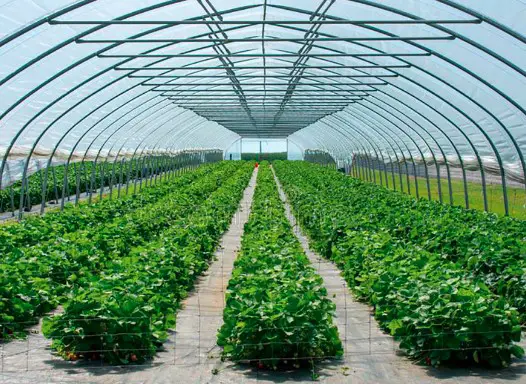As the Protected Cultivation Market continues to expand, the demand for specialized equipment and supplies tailored to greenhouse farming is also on the rise. Let's explore some of the key trends in the market for protected cultivation equipment and supplies:
Greenhouse Structures and Materials:
Greenhouse structures form the foundation of protected cultivation systems, providing shelter and environmental control for crops. Traditional materials such as glass and polycarbonate remain popular choices for greenhouse coverings, offering durability and light transmission. However, there is a growing trend towards innovative materials such as ETFE (ethylene tetrafluoroethylene) film, which offers superior light transmission, thermal insulation, and durability compared to traditional materials.
Irrigation and Water Management Systems:
Efficient irrigation systems are essential for optimizing water usage and ensuring proper hydration of crops in greenhouse environments. Drip irrigation, micro-irrigation, and fertigation systems deliver precise amounts of water and nutrients directly to plant roots, minimizing water waste and nutrient runoff. Advanced water management technologies such as sensors, controllers, and automated irrigation systems enable growers to monitor soil moisture levels, adjust irrigation schedules, and conserve water resources effectively.
Climate Control and Environmental Monitoring:
Climate control systems play a critical role in creating and maintaining optimal growing conditions within greenhouse structures. HVAC (heating, ventilation, and air conditioning) systems regulate temperature and humidity levels, while fans and ventilation systems ensure proper air circulation and CO2 levels. Environmental monitoring devices such as sensors, meters, and data loggers provide real-time insights into temperature, humidity, light levels, and other environmental parameters, enabling growers to make informed decisions and optimize crop performance.
Growing Media and Substrates:
The choice of growing media and substrates significantly impacts plant growth, root development, and nutrient uptake in greenhouse cultivation. Peat moss, coconut coir, perlite, and rockwool are commonly used growing media, offering excellent water retention, aeration, and nutrient availability for plant roots. Soilless substrates such as hydroponic and aeroponic systems eliminate the need for soil entirely, providing plants with direct access to water and nutrients for enhanced growth and productivity.
Crop Protection and Pest Management:
Integrated pest management (IPM) strategies are essential for minimizing crop damage and losses due to pests, diseases, and weeds in greenhouse environments. Biological control agents, such as predatory insects and beneficial microbes, are increasingly being used to control pest populations naturally, reducing reliance on chemical pesticides. Physical barriers, such as insect screens and netting, help prevent pest entry into greenhouse structures, while cultural practices such as crop rotation and sanitation minimize pest pressure and promote plant health.
Conclusion
The Protected Cultivation Market equipment and supplies is experiencing rapid growth and innovation as growers seek to maximize productivity, efficiency, and sustainability in greenhouse farming. By investing in advanced technologies and solutions for irrigation, climate control, growing media, and pest management, growers can optimize crop yields, minimize environmental impact, and meet the growing demand for fresh, high-quality produce year-round. As the industry continues to evolve, the adoption of cutting-edge equipment and supplies will play a crucial role in shaping the future of protected cultivation.





